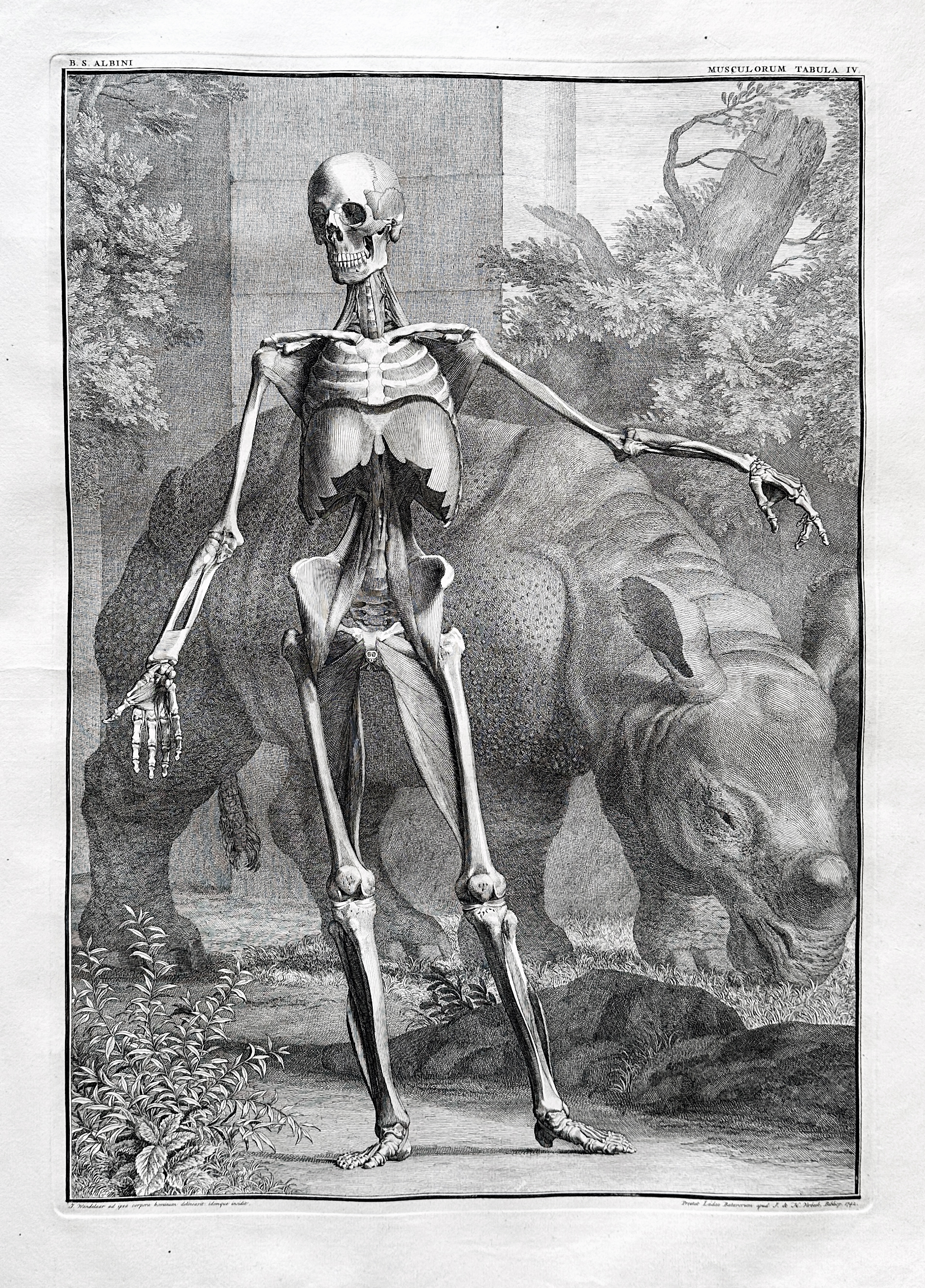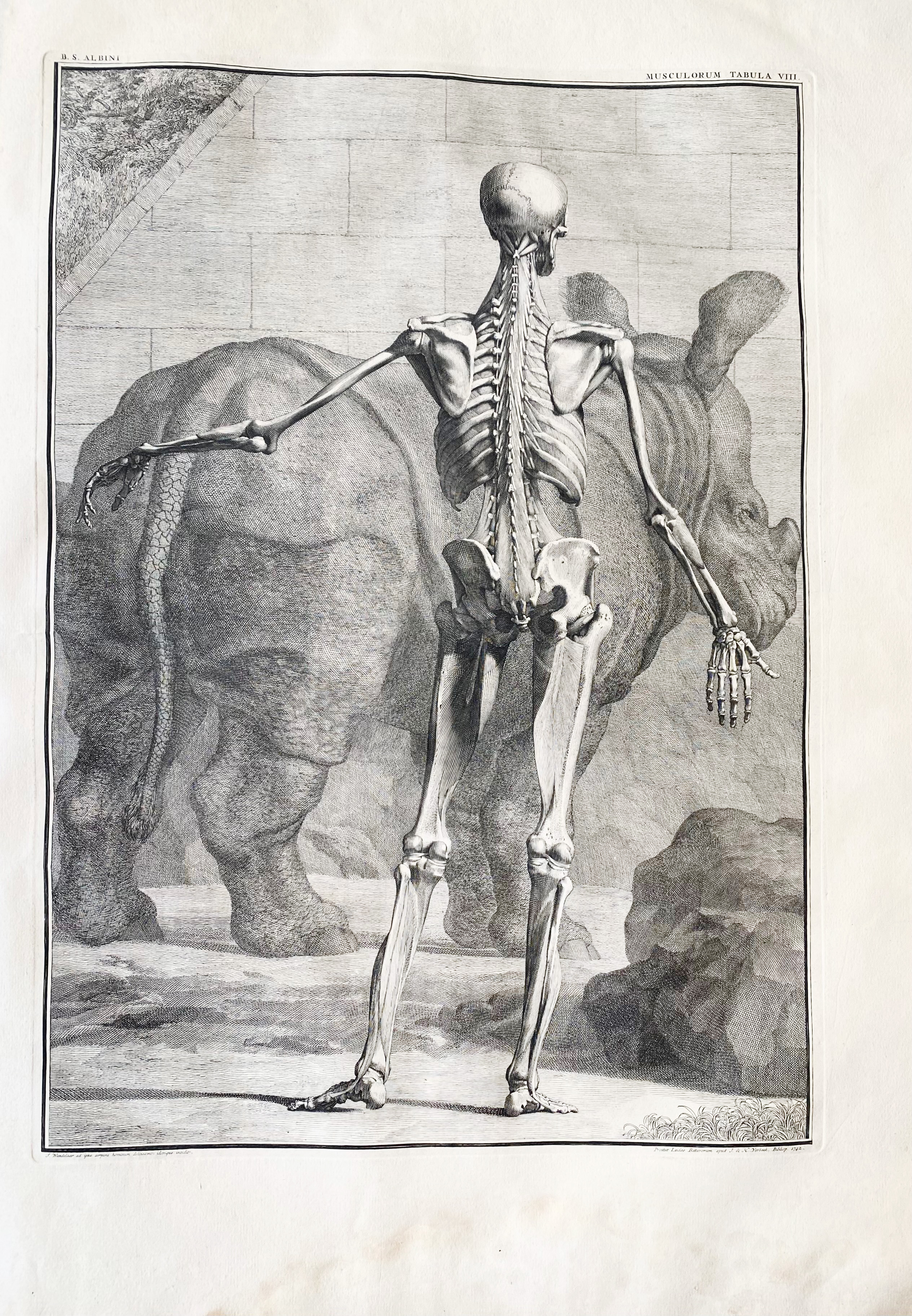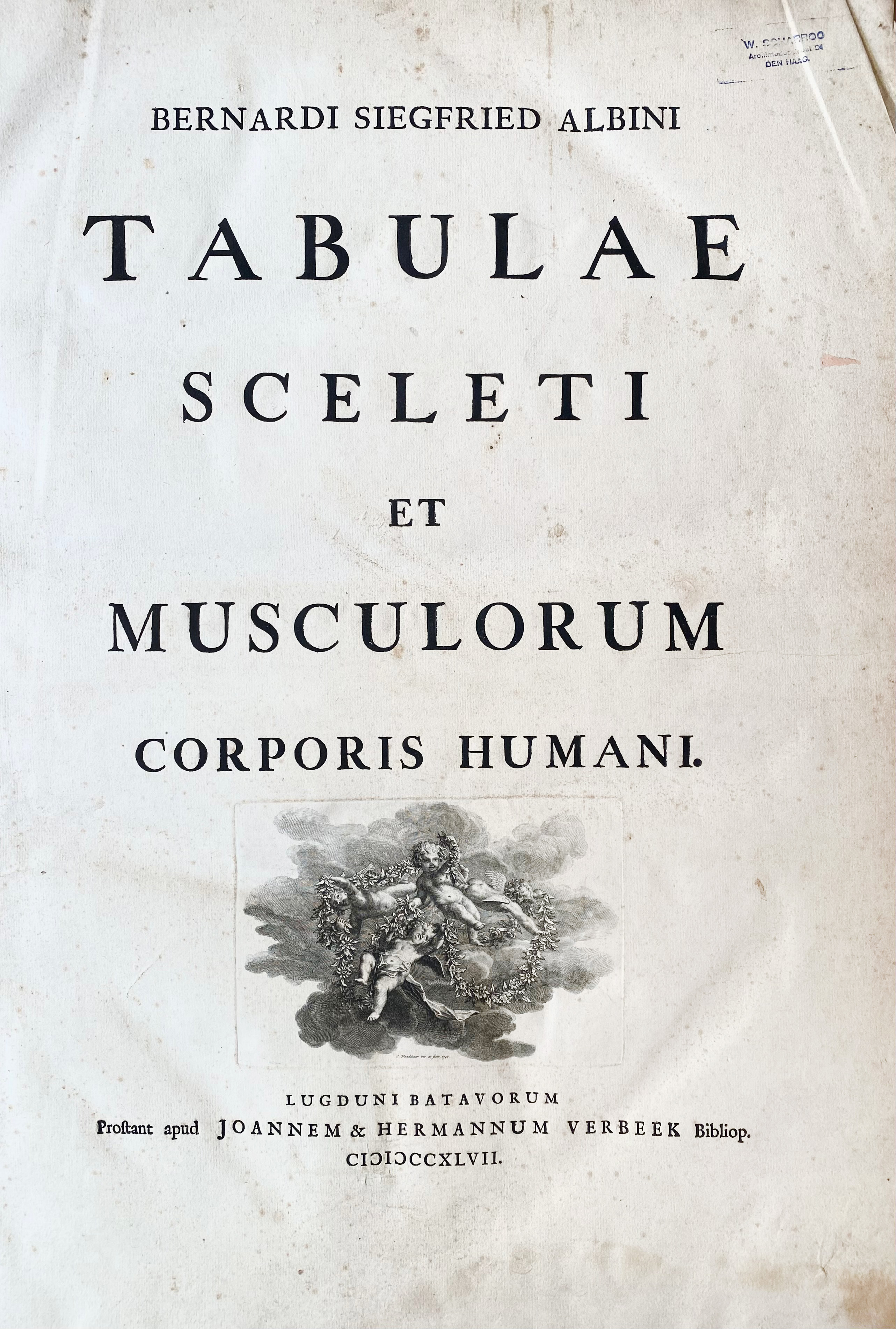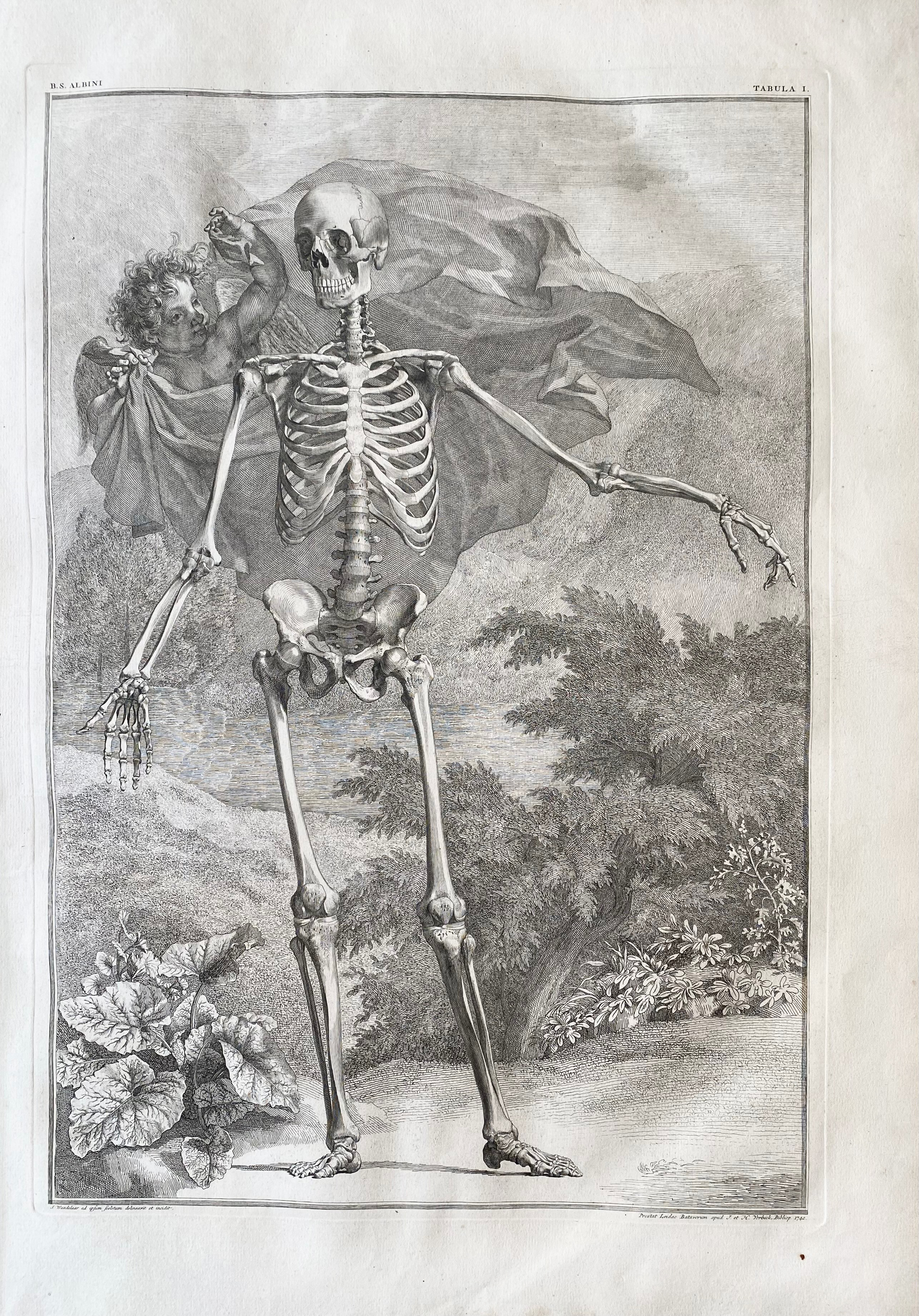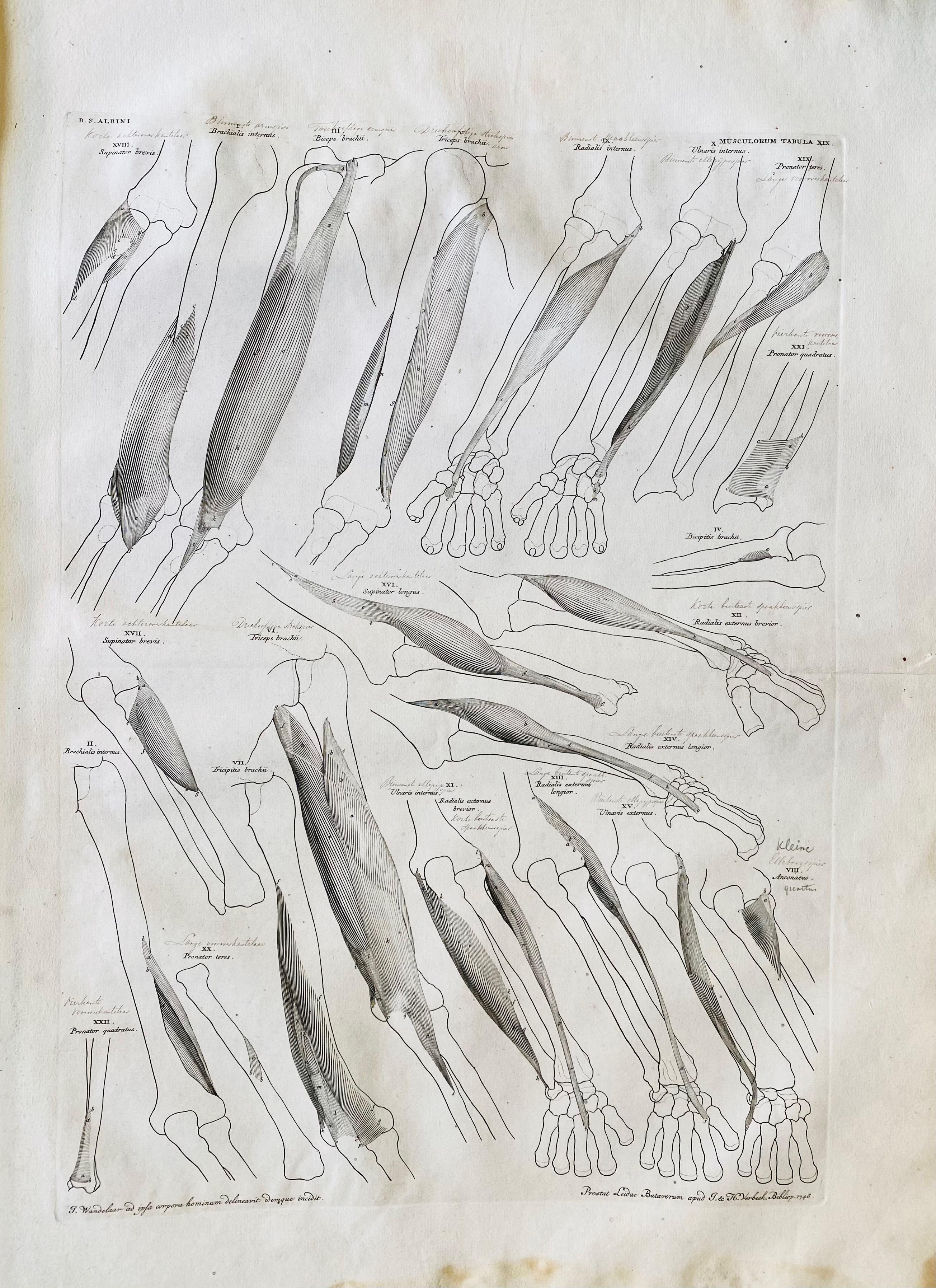Kavel 1103
1103
ALBINUS, B.S. Tabulae sceleti et musculorum corporis humani. Leyden, J. & H. Verbeek, 1747/1753. 2 vols. (48) lvs., engr. title-vign., 3 engr. text-lvs. (title-p., dedication and introduction) and 117 plates by J. Wandelaar (incl. 46 key leaves). Lge-fol. 19th c. h. mor. binds. (Binds. rather worn, calf of spines partly gone, joints partly split, hinges strengthened, corners bumped/worn, w. stamps to ti-pp., annotations to 13 key leaves and to some of the plates of the Musculorum section, lower blank margin vol. 1 severely stained/in places moulded (but not affecting plates), some other smaller stains in places, some minor foxing in places, but a complete set).
Three plates with skeletons (each w. accomp. key leaf); 25 plates to the Musculorum section (9 plates w. accomp. key leaf); 34 plates to the Ossium humanorum section (each w. accomp. key leaf); 7 plates to Uteri mulieris gravidae; 1 plate "Tabula vasis chyliferi (...)" (w. the accomp. textleaf). - "Albinus's Tabulae selecti et musculorum, based on his concept of the "ideal man" (homo perfectus), is among the most artistically perfect of anatomical atlases. Albinus and his artist Jan Wandelaar used some ingenious methods to prepare the illustrations (...) with the aid of compass and ruler. In addition Wandelaar placed his skeletons and musclemen against lush ornamental backgrounds to give them the illusion of vitality, using contrasts of light and mass to produce a three-dimensional effect. The most famous plate in the atlas depicts a skeletal figure standing in front of an enormous grazing rhinoceros, sketched by Wandelaar from the first living specimen in Europe, which had arrived at the Amsterdam zoo in 1741." (Norman Library 29). - Wellcome II, p. 26; G-M 399 (first ed.); Choulant-Frank p. 276-283.€ 5000
uitslag € 6500
Terug
